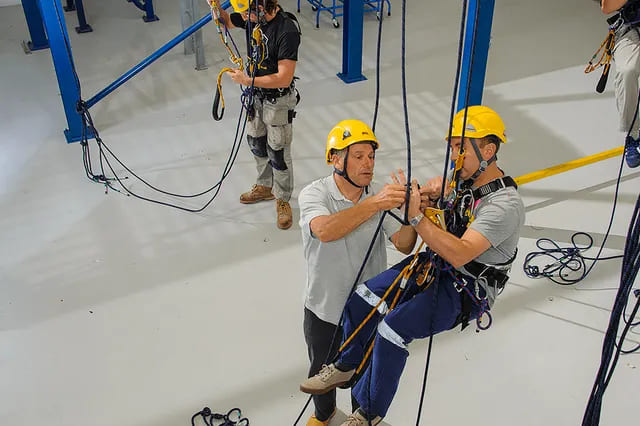In high-risk industries, worker health and safety are non-negotiable. An IRATA rope access course has become an essential part of building a safe working culture for those who operate at height or in hard-to-reach environments. From construction and maintenance to offshore energy, these jobs demand not only physical strength but also technical skill and psychological resilience. By investing in certified training, employers ensure that wellbeing is protected while operational efficiency is maintained.
The Demands of High-Access Work
Industrial workers who perform tasks at significant heights face daily challenges that go beyond physical risk. There is the pressure of precision, the requirement for endurance, and the constant need to manage hazards that can affect both the body and the mind. Certified training addresses these pressures by equipping workers with the correct techniques, tools, and safety awareness to operate with confidence. This reduces stress and anxiety, creating a healthier environment for employees to thrive in.
Reducing Risk Through Knowledge
The most powerful defence against accidents is education. Certified safety training provides workers with the knowledge to anticipate risks, identify unsafe conditions, and respond quickly when incidents occur. The focus is not only on avoiding accidents but also on promoting long-term wellness by reducing strain, fatigue, and exposure to harmful conditions. Such an approach strengthens trust between employer and workforce, as employees feel valued and secure in their roles.
Physical Health and Prevention of Injury
High-access work places strain on the musculoskeletal system, especially when tasks require repetitive movement, heavy lifting, or extended periods in harnesses. Without proper training, these demands can lead to injury or long-term damage. Safety courses include techniques on positioning, ergonomics, and controlled movement that protect the body from unnecessary stress. Workers trained in these principles not only avoid injury but also gain confidence in their ability to perform difficult tasks safely.
Mental Health and Confidence at Height
The psychological strain of working in exposed environments cannot be overlooked. Fear, uncertainty, and stress can quickly escalate without the right preparation. Certified training programmes provide structured, gradual exposure to height-based work, giving individuals the confidence to handle these challenges. This boost in confidence contributes to improved mental wellbeing, reducing stress levels and enabling workers to perform with focus and clarity.
Promoting a Culture of Wellness
Wellbeing is not achieved through equipment alone; it is fostered through culture. When companies prioritise certified safety training, they send a strong message that worker health comes first. This commitment builds morale and loyalty, as employees are more likely to remain with employers who actively protect them. The result is not only healthier workers but also stronger teams and reduced turnover. A positive culture surrounding safety and wellness creates an environment where workers feel valued and respected.
Industry Standards and Long-Term Benefits
Adhering to certified safety standards elevates the entire industry. Employers who embrace these practices set a benchmark that benefits all stakeholders, from employees to clients and regulators. Over time, industries that promote certified high-access safety training see fewer workplace incidents, lower insurance costs, and improved productivity. More importantly, they see a healthier, more motivated workforce that is capable of meeting demanding operational needs without sacrificing wellbeing.
Looking Ahead
As industries evolve, the demands on workers will continue to grow. Technological change and expanding infrastructure projects mean that the need for safe, skilled high-access work will only increase. Certified training remains the cornerstone of ensuring that this workforce is both protected and empowered. By focusing on the wellness of employees, industries safeguard not only their people but also their long-term success.
Conclusion
Worker wellbeing is the foundation of sustainable industry. Certified high-access safety training gives individuals the tools to perform their jobs safely, with confidence and care for their health. By embedding training into workplace culture, employers ensure that physical safety, mental strength, and overall wellness are maintained. The future of industry depends not just on infrastructure and technology, but on the resilience and wellbeing of the people who build and maintain it.




